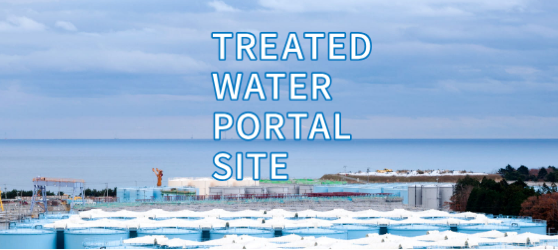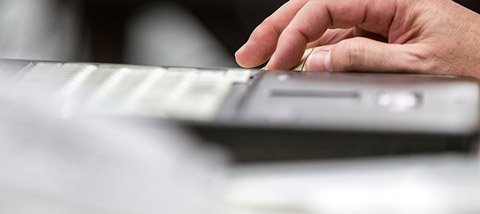Fukushima Daiichi Prompt Report
Recent Topics:TEPCO TO TAKE A NEW LOOK INSIDE UNIT 2 WITH IMPROVED TOOLS; GOAL IS TO GET BETTER DATA ON AREA WHERE FUEL DEBRIS MAY SIT
Jan 19, 2018
A 2017 robotic probe returned important data but was blocked by deposits. The new effort uses tools to extend the reach of cameras and instruments, and help TEPCO learn more.
FUKUSHIMA, Japan, Jan. 19 -TEPCO today began the next robotic investigation of the damaged Unit 2 reactor at Fukushima Daiichi NPS, with improved tools that are designed to overcome obstacles encountered in last year's probe.
Robotic explorations of Unit 2's interior, especially inside the pedestal area at the base of the reactor, are essential to determine the location and condition of fuel that melted and reformed during the 2011 accident. But penetration of the area has been made challenging by deposits from the accident that has blocked the path of robots designed to crawl around it, and high radiation levels that limit the life of electronic equipment. Those radiation levels require the work to be done remotely to protect workers' safety, though precautions are taken to protect the environment and ensure no gases escape from the reactor during the tools' insertion.
"This next effort at Unit 2 illustrates our commitment to developing technologies that will enable decommissioning at Fukushima Daiichi and also become useful elsewhere." said Chief Decommissioning Officer Naohiro Masuda. "Even with the new approach this will be a challenging mission, but we will persevere because obtaining this information is important to developing the ability to eventually remove the fuel debris."
Approach Designed to Overcome Obstacles Found in 2017
During a 2017 investigation, a mobile device was inserted along a rail, including a camera, temperature sensors, and a dosimeter to measure radiation directly rather than inferentially through an interpretation of the "noise" level. The investigation succeeded in obtaining valuable images, along with temperature and radiation readings. But the images were limited by debris, including a fallen floor grate, that obscured the view of the bottom of the pedestal area. And the ability of the device to penetrate further into the reactor was obstructed by deposits that had formed on the rail that guided the device into the reactor. More detail on the 2017 effort, including photographs and drawings, can be found at
https://www4.tepco.co.jp/en/nu/fukushima-np/handouts/2017/images/handouts_170727_03-e.pdf,
www4.tepco.co.jp/en/nu/fukushima-np/handouts/2017/images/handouts_170216_01-e.pdf and
www4.tepco.co.jp/en/nu/fukushima-np/handouts/2017/images/handouts_170215_01-e.pdf.
Drawing on that experience, TEPCO employed enhanced tools and use a different approach in the effort that began today. The changes are designed to enable investigators to see below the fallen grating into the bottom of the pedestal area where it is believed the formerly molten fuel debris sits. They include:
•The guide pipe has been lengthened and strengthened, and an extendable device added to help the camera and other electronics extend further into the pedestal area.
•The electronic device at the tip of the pipe, which includes a camera, light, dosimeter, temperature gauge, and other detection equipment, has been made smaller.
•A skirt has been added to the device to reduce the potential for snagging on objects.
•A mechanism has been added to lower the device from the guide pipe down into the platform bottom.
•Anti-fogging technology has been applied to the camera.
Today's investigation is done, will be considered another day if it's necessary, and results will be made public as soon as possible. The status inside the PCV is still stable and there are no changes in radiation levels at the site boundaries of Fukushima Daiichi NPS. Through this investigation, there was and will be no effect by the radioactive material to the outside the PCV.
For more information about the current effort, including detailed drawings and photographs of the device now being used to explore Unit 2, go to https://www4.tepco.co.jp/en/nu/fukushima-np/handouts/2017/images/handouts_171221_02-e.pdf. The handout also provides a comparison of the new plan with the 2017 investigation.
About TEPCO
Tokyo Electric Power Company Holdings, Inc. (TEPCO) is Japan's largest power company group, holding three independent business entities: TEPCO Fuel & Power, Inc., TEPCO Power Grid, Inc., and TEPCO Energy Partner, Inc. As a group, it generates, distributes, and sells electricity and other types of energy principally to the Kanto metropolitan area, which includes Japan's two most populous cities, Tokyo and Yokohama. Its 42,060 employees are committed to providing safe, reliable power as well as fulfilling its responsibilities to the communities of Fukushima.
(As of April 1, 2017)
TEPCO Website: https://www.tepco.co.jp/en/hd/index-e.html
TEPCO Facebook page: https://www.facebook.com/OfficialTEPCOen
TEPCO Twitter page: https://twitter.com/TEPCO_English
















